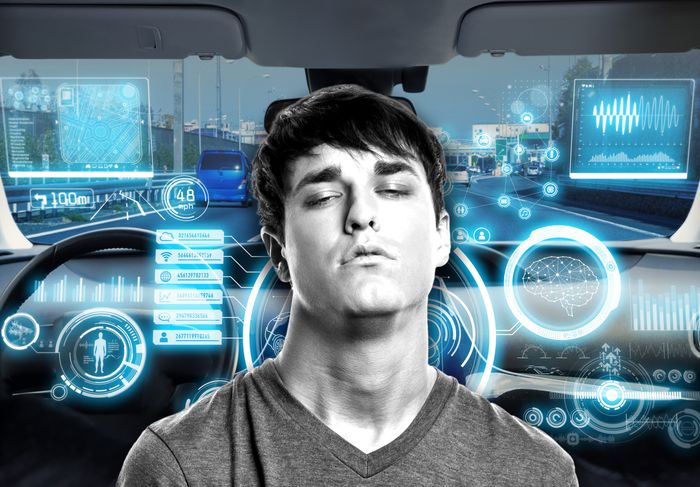Introduction
Advancements in smart technology have opened new possibilities for improving road safety. One area of innovation is the development of devices that can analyze exhaled air and blood flow to detect impairment in drivers. In this article, we will explore the technology behind these devices, their potential benefits, and the challenges that need to be addressed for their widespread adoption.
Analyzing Exhaled Air for Impairment Detection
Breathalyzer devices
Breathalyzer devices are widely used to measure blood alcohol concentration (BAC) by analyzing a person’s breath. These devices work by detecting the presence of ethanol molecules in the exhaled air. They provide an immediate and non-invasive way to determine if a driver is under the influence of alcohol.
Expansion to other substances
Researchers are also exploring the possibility of analyzing exhaled air to detect the presence of other substances that may impair driving ability, such as drugs. This technology, known as a “drugalyzer,” aims to identify specific compounds or biomarkers associated with drug use.
Real-time monitoring
Advancements in smart technology have made it possible to develop breathalyzer devices that can provide real-time monitoring of a driver’s impairment level. These devices can be integrated into vehicles or used as portable devices for roadside testing. Real-time monitoring allows for immediate intervention and can help prevent accidents caused by impaired driving.
Analyzing Blood Flow for Impairment Detection
Wearable devices
Wearable devices, such as smartwatches or wristbands, can use optical sensors to analyze blood flow and provide insights into a person’s physiological state. These sensors measure variables like heart rate, blood oxygen levels, and blood pressure. By monitoring these indicators, it may be possible to detect signs of impairment, such as fatigue or drowsiness.
Machine learning algorithms
Machine learning algorithms can be employed to analyze the data collected from wearable devices and identify patterns associated with impairment. These algorithms can learn from large datasets and make predictions about a person’s level of impairment based on their physiological responses.
Integration with vehicle systems
Integrating wearable devices with vehicle systems can provide real-time feedback to drivers and alert them if their physiological state indicates impairment. For example, if a driver’s heart rate or blood pressure suggests fatigue or drowsiness, the vehicle’s safety systems can activate, such as vibrating the seat or issuing an alert, to prompt the driver to take a break.
Benefits and Challenges
Benefits of analyzing exhaled air and blood flow
Analyzing exhaled air and blood flow has the potential to significantly improve road safety. Some of the benefits include:
- Prevention of accidents: By detecting impairment in real-time, these technologies can help prevent accidents caused by drunk or drugged driving.
- Immediate intervention: Real-time monitoring allows for immediate intervention, such as notifying law enforcement or activating safety systems, to prevent accidents before they occur.
- Non-invasive and convenient: Analyzing exhaled air or using wearable devices is non-invasive and convenient for drivers. It does not require invasive procedures or bodily fluid samples.
Challenges and considerations
While the potential benefits of these technologies are promising, there are several challenges that need to be addressed:
- Accuracy and reliability: The accuracy and reliability of these devices need to be thoroughly tested and validated. Factors such as environmental conditions, individual variations, and device calibration can impact the accuracy of the measurements.
- Privacy concerns: Analyzing exhaled air and monitoring physiological data raises privacy concerns. It is essential to establish clear guidelines and protocols for data collection, storage, and usage to protect individuals’ privacy rights.
- Legal and regulatory frameworks: The use of these technologies raises legal and regulatory questions, including issues related to consent, admissibility of test results in court, and the establishment of standardized thresholds for impairment.
- Cost and accessibility: Making these technologies widely accessible and affordable is crucial for their practical implementation. Cost-effective solutions need to be developed to ensure that they are available to all drivers.
Conclusion
Analyzing exhaled air and blood flow using smart technology has the potential to revolutionize road safety by enabling real-time monitoring and detection of impairment in drivers. By integrating these technologies into vehicles and wearable devices, we can take proactive measures to prevent accidents caused by drunk driving, drug use, fatigue, or drowsiness. However, addressing challenges related to accuracy, privacy, legality, and accessibility is necessary for the widespread adoption and successful implementation of these technologies. With continued research and development, smart technology can play a vital role in creating safer roads for everyone.

